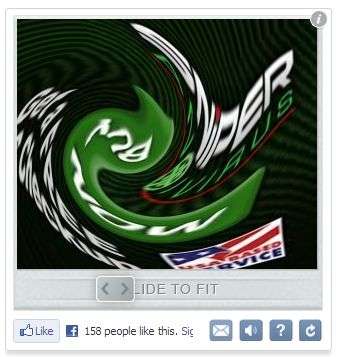December 18, 2012 weblog
Minteye offers no-type CAPTCHA as a security twist

(Phys.org)—Minteye is offering a no-type option to annoying CAPTCHA tests where users' first tries turn into third and fourth tries to get the blurry, blotched letters and digits correct for entry. The company Minteye, made up of "engineers, designers and entrepreneurs," has come up with a solution that is targeted both at advertisers and web site owners, called SLIDING CAPTCHA, with the idea being "slide to fit." Minteye's flavor of a CAPTCHA appears as a twisted, wavy, deformed, image with a small slider below the image.
The user has to move the slider until the user sees the image as normal. Minteye kicks in to see if the user moved the slider to the correct position and alerts the website that the user is human so that further navigation can occur. The company said it built its product on a cross-technology platform. Its SLIDING CAPTCHA supports common Web languages such as PHP, Java and ASP.NET and plugins for content management systems such as WordPress and Drupal.
The slide-to-fit CAPTCHA has a success-rate of 94 percent, impressive if compared to the industry standard of 76 percent for text-based tests. Enabling user happiness in not having to struggle with repeat efforts to translate CAPTCHA strings, however, is only a part of the company's mission. With offices in North Bergen, New Jersey, and Tel Aviv, Minteye is presenting this solution as a way to monetize the CAPTCHA process for site owners and advertisers.
A product name in the image would be the money-maker that wins users and influences better brand recognition. The company's mission is "to combine CAPTCHA security technology with advertising." Minteye's team says it is "dedicated to delivering nonintrusive advertising products that overcome online advertising blindness."
The SLIDING CAPTCHA is designed to work with a mouse or with a finger slide, which means it would be just as able to operate on a tablet and smartphone as on a mouse-connected PC. In turn, the company believes it has the potential of becoming an appealing opportunity for CAPTCHA-seeking industry players in mobile devices such as tablets and smartphones. Site owners get a share of advertising revenues. Advertisers use the tool customized to their targeted audience and budget.
CAPTCHA stands for Completely Automated Public Turing Test to Tell Computers and Humans Apart. The test is attributed to a Carnegie Mellon University computer science graduate student and his advisor in 2000 who wanted to provide a security tool that could safeguard web sites from automated bot attacks and spammers. As such, it has become an effective way for site owners to make sure that a submission for registration is coming from a real person.
Nonetheless, a staunch belief in security circles is that 100 percent CAPTCHA security would only be fiction. As for the slide technique that is being presented by Minteye, similar doubt is expressed outside Minteye that computers, not humans, will always remain stumped by this process. Speaking in Technology Review, however, Gadi Hadar, the CEO of Minteye, is also not harboring any illusions. He said there is no CAPTCHA in the world that cannot be cracked.
More information: www.minteye.com/products.aspx
© 2012 Phys.org


















